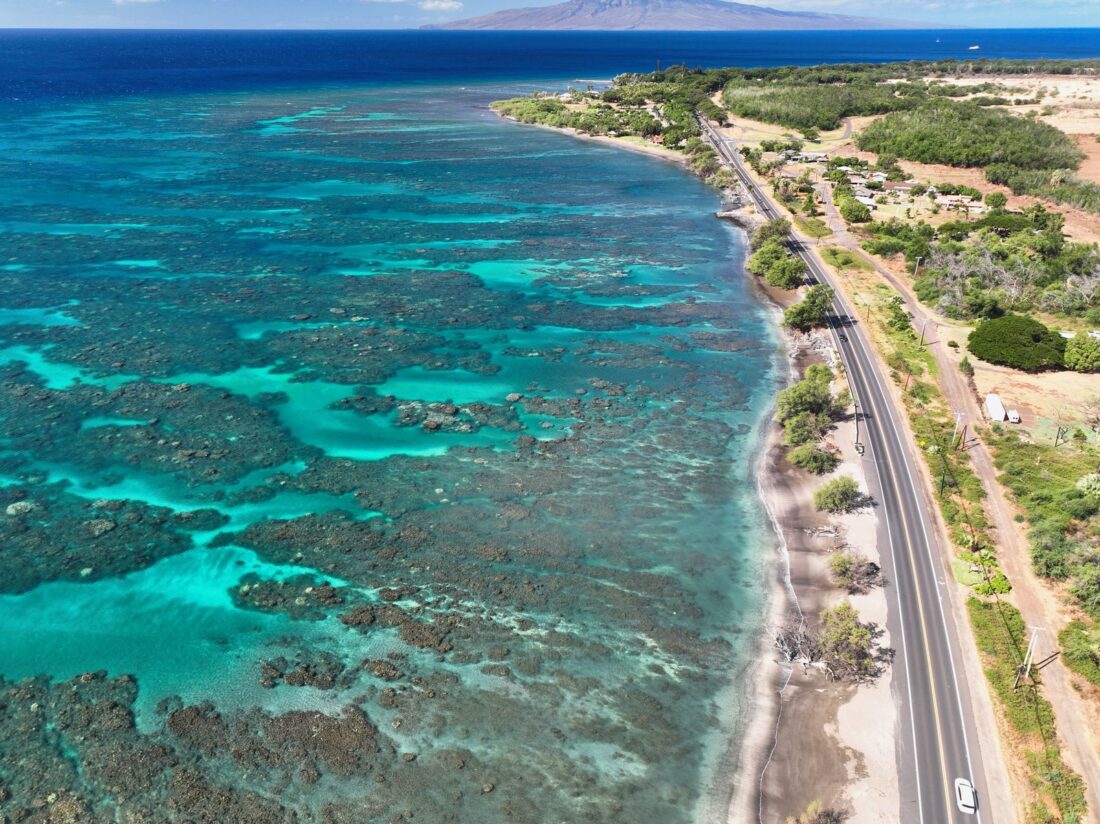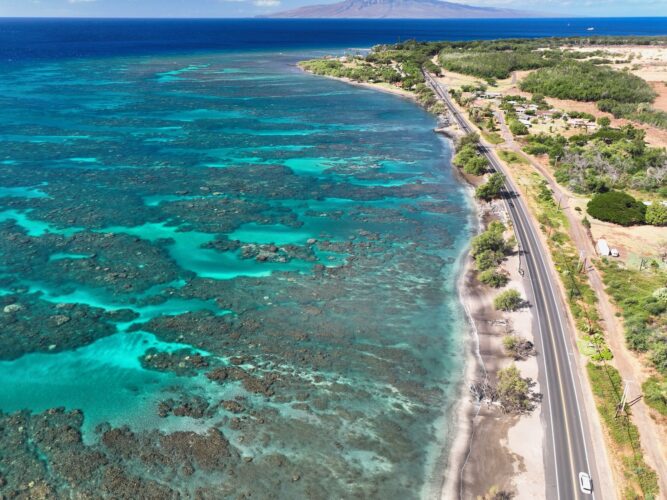
Various proposals are scheduled to be discussed at meetings about Olowalu and surrounding areas, in anticipation of the main road being moved mauka. Photo courtesy Kelly James
The Nature Conservancy will host a meeting for the public to view a detailed landscape design for a Olowalu and Ukumehame coastal corridor once the state highway is realigned and moved farther away from the shoreline.
The meeting will be from 5:30-8 p.m. Tuesday, Nov 18, at the Lahaina High School Cafeteria. Additionally, there will be virtual meetings from 4:30-6 p.m. Thursday and Friday.
During the meeting, participants will be invited to rank proposals and share their thoughts on various ideas. Facilitating the three meetings will be the ‘A’ali’i Alliance representatives.
The proposals include a six-mile area between the Lahaina Bypass at Olowalu and the Pali, as well as Ukumehame Beach Park, habitat restoration and wetlands.
According to the Nature Conservancy, the proposal runs in concert with the Hawaii Department of Transportation’s plan to move a six-mile section of the Honoapiilani Highway farther mauka due to chronic erosion and flooding.
The conservancy partnered with the community organization Kipuka Olowalu and the Coral Reef Alliance to engage local residents, landowners and managers in creating a shared vision, developing a plan for coastal resilience including Hawaiian traditional practices.
The Nature Conservancy is now working with public and private partners to develop “nature-based solutions” in restoring beaches, dunes and wetlands.
The efforts are based on the understanding that conservation requires collaboration across different land ownerships and community interests, according to the Nature Conservancy.
One big goal is to reduce sediment going into the ocean and harming reefs identified as critical habitat.
In 2017, West Maui’s Olowalu reef was declared a Mission Blue Hope Spot — a place that is critical for the ocean’s health.
Spanning the coast from Olowalu to Pāpalaua, the 939-acre reef boasts a stunning diversity of coral, harbors the largest known manta ray population in the U.S. and is a primary source of coral larvae for the reefs of Lanai, Molokai and West Maui.
The reef at Olowalu is regularly inundated with soil sediment from nearby streams, which smother live corals and prevent new coral growth.
For more information about the project, go to https://tinyurl.com/bm9vndsu.

